Supporting the shift towards a low-carbon economy in all sectors.
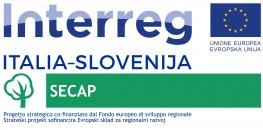
The overall objective of SECAP is to encourage the sustainable development of the cross-border territory, promoting low-carbon strategies for all types of territory, especially urban areas, creating relevant adaptation and mitigation measures (Axis 2 priority 4e).
The project, in fact, led to the cross-border sharing of tools, methodologies and databases and generating positive effects on local planning of the entire program area.
The transition to a low-carbon society has been implemented in the infrastructural interventions of project partners Metropolitan City of Venice and Pivka Municipality and in the evolution of Sustainable Energy Action Plans (SEAPs) into Sustainable Energy and Climate Action Plans (SECAPs) for the involved municipalities.
The sustainable development models of the Covenant of Mayors (initiative supported by the European Commission to actively engage cities towards energy sustainability) were promoted with an improvement in the quality of life and resilience to climate change.
The common challenge that the project set itself was to offer practical support to the municipalities of the partner area for the implementation of sustainable energy and climate adaptation policies, which are reflected in the transaction from Sustainable Energy Action Plan (SEAP) to Sustainable Energy and Climate Action Plan (SECAP).
The main objective of the project is to improve energy planning by local operators, focusing on energy saving, renewable energy, the reduction of CO2 emissions and mitigation measures related to existing climate changes.
The change, which we wanted to implement, derives from the choice of a strategic transnational approach, which led to the development of timely adaptation measures, which guarantee coherence between the different sectors and levels of governance, in order to understand the impacts of climate change and to implement policies for optimal adaptation, through the development of regional and local strategies, coherent with national ones. The presence of Slovenian Ministries, as associated partners, and the FVG Region ensures the sharing of choices with governance bodies to ensure consistency of the strategy with action plans and with national and regional development policies.
A study on the impact of climate change was conducted on the Program Area with methodological and EIB reports for the Municipalities involved. To this end, a common methodology was tested to be provided to the PA for the definition, in an effective and cost-effective way, of the EIBs and MEIs (inventory & monitoring of emissions), creation of an inventory of strategies, measures and projects already defined and useful for increasing urban resilience, creation of bilingual online databases of statistics and data on energy / climate / environment and an Italian-Slovenian atlas of the vulnerability of territories with insights on an urban scale. Furthermore, we collected good practices for mitigation and climate change.
Based on the work described above, we have developed 'Mitigation and Adaptation Strategies' and 'Cross-border guidelines for Municipalities'.
-Mitigation and adapation strategies
Mitigation and adaptation are the two measures to implement the fight against climate change. The first aims to set the limits of future climate change by reducing greenhouse gas emissions. The second includes measures that aim to introduce strategies to prepare for the inevitable impacts on nature, society and the economy from the ongoing climate change.
Download here the bilingual version of the 1st Volume on Mitigation: https://2014-2020.ita-slo.eu/sites/default/files/progetti/ATT%209%20-%20Mitigation%20Strategies.pdf
Download here the bilingual version of the 2nd Volume on Adaptation: https://2014-2020.ita-slo.eu/sites/default/files/progetti/ATT%2011%20-%20Adaptation%20Strategies.pdf
-Guidelines for municipalities
This Guidelines are aimed at promoting and favouring the entry of those municipalities still outside the SEAP/SECAP process. These guidelines are cross-border and unique for the Italian and Slovenian territory, as they are shared among all project partners. The document collects and compares the experiences gained through the pilot actions of the SECAP project. They describe, starting from the same template, the steps for the implementation of the plans and help to recognise the most critical nodes of the process.
Per scaricare il file: https://2014-2020.ita-slo.eu/sites/default/files/progetti/ATT%2012%20-%20Guidelines%20for%20Municipalities_0.pdf
B. Pilot Actions
-Pilot projects-energy efficiency and climate adaptation interventions on two buildings
SECAP's infrastructural interventions do not aim to fully implement the strategies developed in the previous phases, but have a demonstrative role and provide tangible elements and experiences that will actively contribute to testing energy saving interventions. These results make an effective contribution to indicator 2.1.1 d for SO 2.1, because both directly and indirectly, the level of the ability of the cities, affected by the project actions, to reduce their energy consumption in public buildings is improved. In addition, interventions of this kind have a direct impact on public awareness.
|
Creation of external green areas supporting hydraulic invariance for the Casa dell'Energia complex
Casa dell’Energia (Mirano)
These intervention leads to recovery of rainwater from the internal road in the school complex ,as a mitigation measure for the sealing of the surrounding areas through the hydraulic invariance lamination basin. The basin is an 'artificial lake' into which rainwater flows before being discharged. Part of the green area is intended to create an example of sustainable urban drainage. Sustainable urban drainage consists of a new flowerbed concept along the roadside. The project included a demonstration element as a possible alternative water collection system. |
Green roof and thermal insulation cladding on the Krpanov dom in Pivka
Krpanov Dom (Pivka)
The municipality of Pivka, on the largest multi-purpose public building in the municipality (internal surface area 3,052 m2), the Krpanov dom, proceeded with insulating the building and the building of two green roofs on the flat part of the roof, with a total area of approximately 130m. |
-Two feasibility studies
|
Energy Audit of Revoltella museum in Trieste
An energy audit of the building was performed in order to understand energy consumption in detail and the impact of climate change on it. Intervention scenarios were developed in order to improve the energy performance of the building and its system. Download the Italian version https://2014-2020.ita-slo.eu/sites/default/files/progetti/SECAP-D1-ATT15_final_IT_pu.pdf Download the Slovenian version: https://2014-2020.ita-slo.eu/sites/default/files/progetti/SECAP-D1-ATT15_final_SLO_pu.pdf |
Study on the potential for heat recovery from municipal waste water in the Municipality of Kranj
Firstly, potential locations were identified where a waste water heat recovery system could be implemented, and a calculation of the heat potential was performed. This was followed by the identification of the most suitable technological solutions and systems. One of the main results of the study is the energy budget, which demonstrates the rationality of the investment in an innovative technical solution. Download the Italian version: https://2014-2020.ita-slo.eu/sites/default/files/progetti/ATT%2015%20SECAP%20LEAG_MOK_2021-translation_ITAdef_0.pdf Download the Slovenian version: https://2014-2020.ita-slo.eu/sites/default/files/progetti/SECAP%20LEAG_MOK_2021-for%20translation_0.pdf |
-Piccoli investimenti per monitorare le emissioni in atmosfera ed i consumi energetici:
-Small investments to monitor emissions and energy consumption:
Air quality measurement (smart city Kranj)
Energy consumption monitoring for the municipality of Log - Dragomer.
-C. Development of Sustainable Energy and Climate Change Action Plans (SECAPs)
Partendo dai risultati ottenuti dallo studio sull’impatto dei cambiamenti climatici sull’area di programma e azioni pilota volte a definire metodologie per un PAESC adattato ai bisogni locali, i partner tecnici hanno accompagnato i Comuni coinvolti nella redazione dei loro Piani di azione per l’energia sostenibile e il clima.
Sono stati coinvolti i seguenti Comuni: Trieste, Duino-Aurisina, Aidussina, Idria, Capodistria, Nova Gorica, Pivka, Brezovica, area vasta di Sacile (Sacile, Brugnera, Budoia, Caneva, Fontanafredda, Polcenigo)
D. Potenziamento delle professionalità locali mediante formazioni e help desk
Sono stati attivati due helpdesk, uno sul territorio italiano e uno su quello sloveno, con la finalità di fornire consulenza ai Comuni. Lo scopo è stato quello di mettere a disposizione le informazioni necessarie per capire cosa sia un PAESC, quali siano i diversi passi da intraprendere per giungere alla redazione del documento e sui possibili strumenti a disposizione dei Comuni, nonché su quali siano gli attori da coinvolgere nel percorso (portatori d’interesse, associazioni locali, cittadinanza)
Based on the results of the study on the impact of climate change on the Programme Area and pilot actions aimed at defining methodologies for a SECAP adapted to local needs, the technical partners supported the municipalities involved in the project, in drafting their Sustainable Energy and Climate Action Plans.
Furthermore, nine training sessions were organised in the various municipalities of the cross-border area, targeting local administrators and stakeholders, also aimed at raising public awareness.
Lead Partner
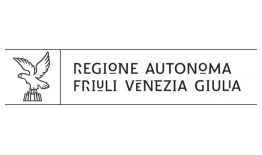
Project partner 1
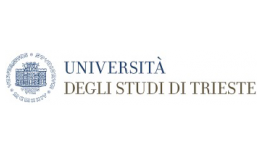
Project partner 2

Project partner 3
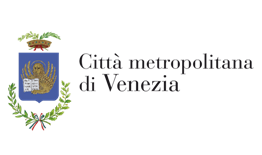
Project partner 4

Project partner 5
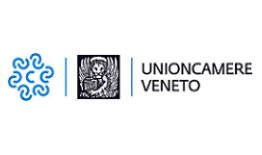
Project partner 6
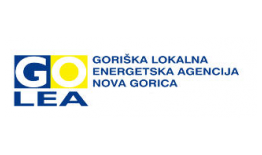
Project partner 7
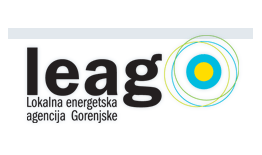
Project partner 8
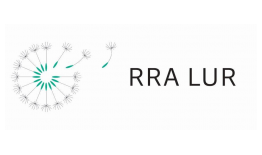
Project partner 9
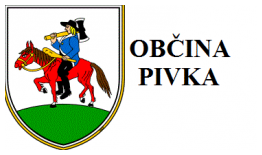
| ATT 15 Collection of Best Practices (EN) SECAP ATT15 COLLECTION OF GOOD PRACTICES ALL PPs.pdf ( 981 bytes, published on 2 May, 2022 - 16:24 ) | |
| Poster Poster.pdf ( 995 bytes, published on 30 May, 2022 - 09:57 ) | |
| Flyer Flyer.pdf ( 2 bytes, published on 30 May, 2022 - 09:57 ) | |
| Final brochure Final brochure.pdf ( 1 byte, published on 30 May, 2022 - 09:57 ) |
1. Developing scenarios illustrating the possible impact of climate change on the territory and laying the foundations for the cross-border strategy.
In order to create a single cross-border strategy, the PPs will analyse and study - with a view to information downscaling - the climate change scenarios set out by the IPCC (2030-2050 and 2070/2100) in order to define the impacts on the environment and human activities taking into account both direct and indirect impacts. We will develop and test a shared cross-border methodology for establishing BEIs and EMIs, producing climate-changing emission maps and providing projections to 2030. The goal is to provide data, information and operational indications to municipalities, as the basis of the unitary strategy taking into account the regulatory constraints and the financial and human resources available. This also includes proposals for monitoring systems to ensure that the effectiveness of the measures applied is verified over time, granting them duration and effectiveness.
2. Developing a single cross-border strategy for climate change mitigation and adaptation.
The objective is to create a cross-border strategy that leads to a reduction in the vulnerability of cross-border territories to an expected impact, effectively increasing their resilience. The strategy will be developed with a view to integration with existing spatial and sector planning, as well as with European and national policies. The specific aim is also to define the methodologies for the elaboration of a SECAP that can be adapted to regional needs and specifications. The aim is to align cities with the Covenant of Mayors for Climate and Energy (Mayors Adapt), empowering local authorities to decline the adaptation strategy and measures in order to convert their SEAPs into SECAPs or at least to integrate local planning tools towards an adaptation perspective. In order to make it easier to apply the SEAP in the programme area, guidelines will be drawn up, with an urban/territorial and regulatory content, which will allow municipalities to understand the need for a strong coexistence of the transition and adaptation component in the ordinary and sector instruments of territorial governance.
3. The objective is to guide and accompany municipalities in drawing up plans that combine mitigation/adaptation, with a view to integrated, low-carbon planning, typical of the Mayor Adapt model.
The aim is to encourage the inclusion of adaptation measures in ordinary planning, in order to integrate them with existing ones with a view to reducing risks. This means that local authorities will be able to present the adaptation approach as an integral part of their urban planning, with the idea of starting from the existing plans to build as much as possible on mechanisms, policies and procedures that generate continuity. In this perspective, there is a process of PA shadowing by organising training workshops on the subject of drafting SECAPs for municipalities in the Programme area and specific help desks, transforming some SEAPs into SECAPs, into specific infra-structural interventions aimed at contributing to the reduction of air pollution and improving energy use in public buildings and demonstrating techniques for reducing vulnerability to extreme weather events.